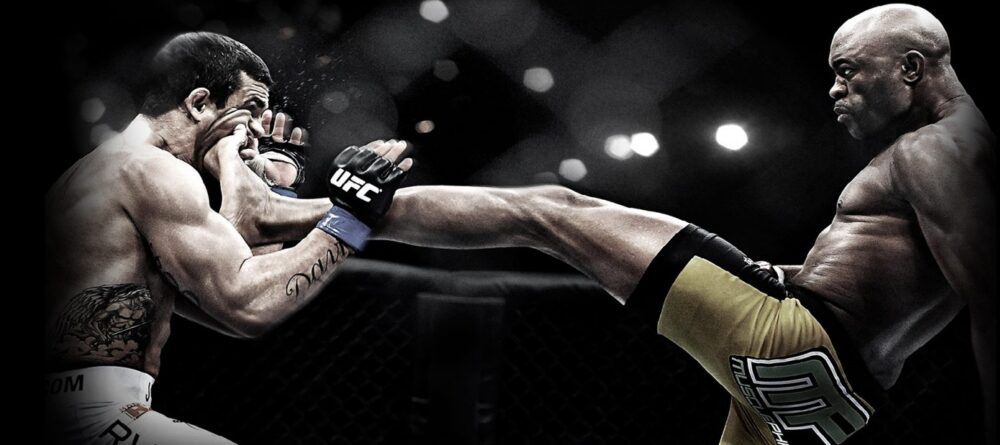Jiu Jitsu is a Japanese martial arts that dates back to the 1530s. Today it is practiced by millions of people around the world, and that’s mainly due to the popularization of it by the Brazilian fighters.
Continue readingTag Archives: get mma active
Can Martial Arts Be Self-taught
Many people who want to get into martial arts often ask Can Martial Arts Be Self-taught? This is actually a great question to ask because people would like to learn martial arts from the comfort of their homes. This article will explain if martial arts can be self-taught and if it is, how one would go about doing so.
10 Health Benefits of Martial Arts
Understanding The Basics of Martial Arts
Martial arts are a system of combat techniques used for fighting and self-defense. People of all ages practice martial arts to build strength, flexibility, and discipline. They can also help people stay healthy by teaching them martial arts moves.
In addition, martial arts competitions occur regularly around the world and feature national and international level fighters.
Can Martial Arts Be Self-taught
Yes, martial arts can be self-taught. Martial arts are self-taught hobbies that people choose to excel in. Most martial arts are initially learned through a class, but people can also learn martial arts on their own.
Thanks to instructional online videos and books, it’s easy to learn martial arts now compared to decades ago. Most people choose to learn martial arts because it’s fun and provides several career benefits.
When learning on your own be sure to have enough space to practice. Also be sure to stretch properly in order to avoid pulling any muscles.
Doing martial arts on your own can allow you to learn from the comfort of your home, but you have to be careful. Although you can teach yourself martial arts through the aid of online videos or books, in order to take your skills to the next level it’s best to join a martial arts class.
An experienced instructor can guide you on your journey to becoming proficient in martial arts. Also, taking classes can allow you to spar with other classmates in order to get a feel of competition, or even a real fight.
Here are reasons why MMA is popular
Learning Martial Arts at Home (Video)
How Can You Learn Martial Arts At Home
As mentioned earlier you can learn martial arts at home through online videos, books, and even DVDs – if you still own a DVD player.
Learning martial arts through streaming Youtube videos are by far the most popular way to teach yourself martial arts from the comfort of your home. Below are a list of things to keep in mind when doing martial arts on your own.
- Learn from a credible instructor. Research reviews, comments, and the experience of the instructor
- Chose an online instructor that is knowledgeable, has experience, and teaches at your learning pace
- Learn for free to try out the material. If you need more exclusive training, pay for it within reason
- Pace yourself as a beginner. Learn basic moves and master them before advancing
- Train in an open space and always remember to stretch before you start any activity.
Wondering if martial arts actually work? Here’s the truth!

Famous Self-taught Martial Artists
There are a number of MMA fighters that are self-taught martial artists. When I mention self-taught I mean that they started their training journey alone, and got to the level where they could hire a professional coach to guide them.
Many fighters start training at home. They do everything from the basic striking moves, blocks, cardio sessions, and shadow boxing. Later when these fighter can afford to go to the gym and hire a coach; they did so.
Self-taught Mixed Martial Artists
- Jon Jones
- Evan Tanner
- Mirko Filipović
- Rich Franklin
- Bas Rutten
- Jim Miller
- Roy Nelson
- Uriah Hall
- Dave Herman
- Matthew Riddle
- James Thompson
- Anderson Silva
- Forrest Griffin
- Jon Fitch
Here Are Tips For Karate Beginners
Taekwondo Training From Home (Video)
Best Martial Arts to Learn at Home
There is no particular best martial arts to learn at home. The best advice would be to choose a martial arts and instructor you are comfortable with. In order to choose the best martial arts suitable for you – you’re going to have to do a bit of research on a number of martial arts.
Pick a martial arts according to your needs. Do you want one that emphasizes more kicks? Or one that is best for women’s self defense? How about one that is more focused on grappling? Ultimately the choice is up to you, only you can answer these questions based on your needs.
It’s okay if hop from one martial arts to another within a few weeks. Many people who register for martial arts tend to do this. All that’s happening is that they are trying to find the right fit for them. This is important because you don’t want to waste your time and money on something that’s not working.
It’s important to choose the best martial arts for you. One that you are comfortable sticking with until you become more proficient at it.
Conclusion
So, can martial arts be self-taught? The answer is yes it can. You can learn martial arts on your own through books and streaming lessons online. When seeking to learn from an instructor make sure that he is knowledgeable and has experience teaching martial arts.
Do proper research on the instructor because some are qualified to instruct, while some are not. When doing martial arts at home be sure to do it in a spacious area and stretch properly to avoid injury.
There are many martial arts to choose from, and the one that you should be training in is the one that you’re most comfortable with, and suits all your needs.
Sponsor: 5 martial Arts You Should Lean
15 Celebrities Who Train In Martial Arts
Martial arts are no joke, and these celebrities prove that every day. From actors and athletes to reality TV stars and musicians. These 15 celebrities who train in martial arts take it seriously, and use it to improve their physical and mental condition.
While some of these celebrities are more experienced than others when it comes to martial arts, all of them have successfully combined martial arts training with their other careers. Here are 15 celebrities who train in martial arts.
Here is the list of the 15 celebrities who train in martial arts
Celebrity Name: Jessica Alba
Occupation: Actor, businesswoman
Type of Martial Arts: Taekwondo and Krav Maga
Training Since: Early 2000’s
Belt Grade: Black belt
She is a successful entrepreneur and actress that is known for her well-maintained physique while being able to kick some butt.
She is a mom of two but still maintains her fitness over the years by working out and training in martial arts.
She is a blackbelt in Taekwondo and was also trained in Krav Maga which she uses in fight scenes that include weapons and hand-to-hand combat.
Jessica’s training includes a lot of striking on mitts and pads together with functional workouts for a well-rounded routine.
Standing Kimura Armlock Technique
Celebrity Name: Ed O’Neill
Occupation: Actor, comedian, football player
Type of Martial Arts: Brazilian Jiu-jitsu
Training Since: Around 22 years
Belt Grade: Black belt
A well-renowned actor and football player from the 1940s is also a martial artist who practices Brazilian Jiujitsu. He received his black belt in December 2007 and it was featured in the 2012 TV documentary “I Am Bruce Lee”.
For him, it was the greatest achievement of his life because it was an overwhelming feat of discipline that promotes his health, and physical and mental well-being even in his old age.
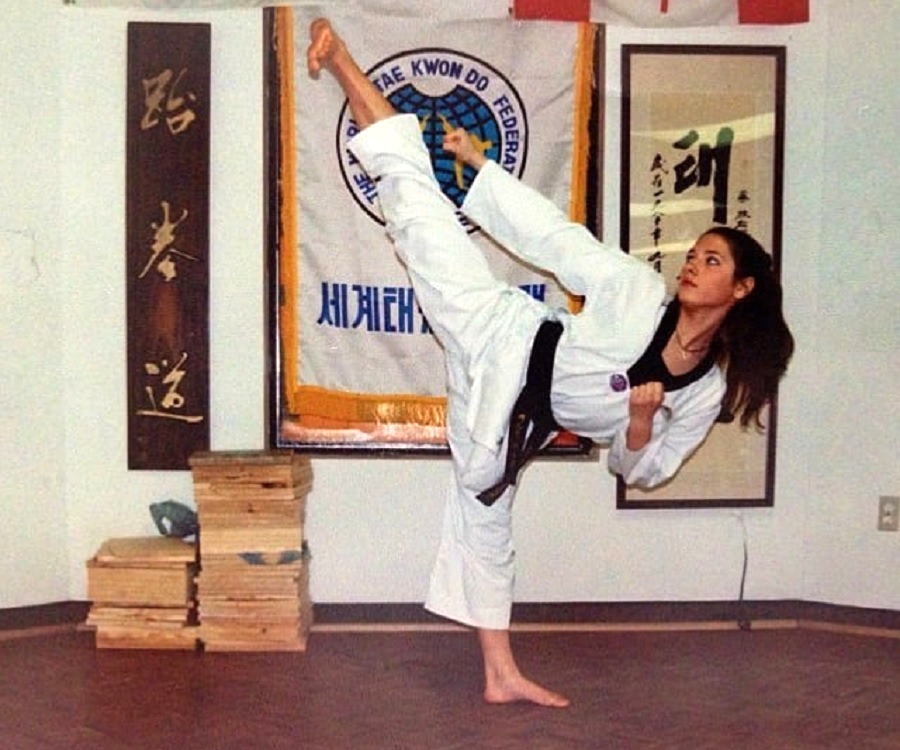
Celebrity Name: Katheryn Winnick
Occupation: Actress, stunt double
Type of Martial Arts: Taekwondo and Karate
Training Since: 7 years old
Belt Grade: Black belt
She is a Canadian actress that is known for her roles in the TV series Vikings, Wu Assassins, and Bones. She entered the movie industry by teaching martial arts to actors on the set and eventually became an actress herself.
Some of her family members are martial arts practitioners and that honed her in the sport. She started practicing at the age of 7 and became a black belt at the age of 13 and until now, she is actively practicing for her roles in the film and also to maintain her athletic physique.
Celebrity Name: Demi Lovato
Occupation: Actor, singer, songwriter
Type of Martial Arts: Brazilian Jiu-jitsu
Training Since: 2016
Belt Grade: Blue belt
Many people would be surprised that this singer, songwriter, and Grammy nominee is a martial arts practitioner! Demi has been fit all her life and while having an active music career, she chose to be fit in order to last in the industry.
She utilizes healthy living as a form of self-care and she never stops training. She earned her blue belt in Brazilian Jiujitsu in 2009 and she combines her routine with strength training and a healthy diet.
Celebrity Name: Wiz Khalifa
Occupation: Rapper, singer, and songwriter
Type of Martial Arts: Brazilian Jiu-jitsu and Muay Thai
Training Since: May 2017
Belt Grade: White belt
A well-known controversial rapper Wiz Khalifa trained in Brazilian Jiujitsu in 2017 and later trained in Muay Thai with Saenchai in a YOKKAO seminar. He improved his overall physique by combining heavy lifting and martial arts in his routine.
Martial arts kept his fluidity and while lifting weights improved his physique by adding up muscle mass and definition. All of it helped him a lot to stay in his career by staying healthy and improving his performance.
Celebrity Name: Kevin James
Occupation: Actor, comedian, and screenwriter
Type of Martial Arts: MMA and Muay Thai
Training Since: “Here Comes the Boom” in 2012
Belt Grade: N/A
Doing The Single Leg Sweep From Guard
Kevin James is a funny man who doesn’t really care about fitness, not until he was starred in the movie “Here Comes the Boom” that he realized that he really needed it all his life!
He trained for 14 months and was treated like a fighter in order to get into the physical and mental attributes of a real MMA fighter. He still trains in martial arts after doing the movie as he was an avid fan and he enjoys it.
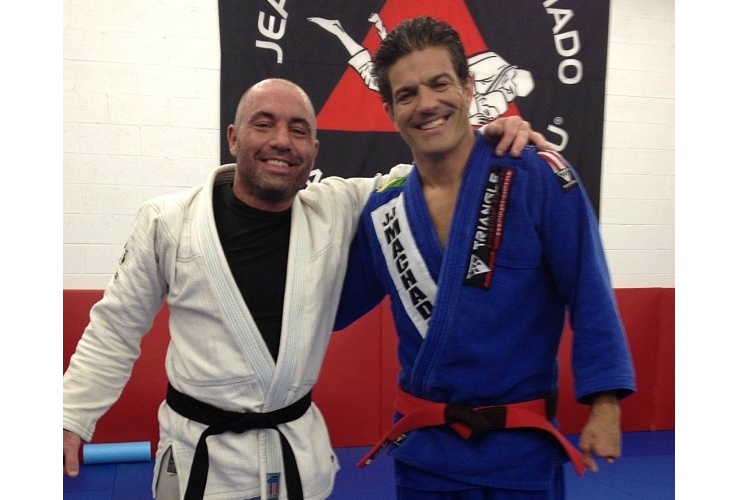
Celebrity Name: Joe Rogan
Occupation: Comedian, Actor, Television presenter, Podcaster
Type of Martial Arts: Karate, Taekwondo, Brazilian Jiu-jitsu
Training Since: 14 years old
Belt Grade: Black belt
The famous comedian and UFC color commentator is a martial artist himself! He took up Karate at 14 and taekwondo a year later. Martial arts gave him confidence and a different perspective of himself and his capabilities.
He won as a lightweight in the US Open Championship taekwondo tournament and was a full-contact state champion for four years until he became a Taekwondo instructor.
He retired from competition at age 21 but keeps his discipline until now as he is still practicing martial arts to keep his mind sharp while his body in great shape.
Celebrity Name: Henry Cavill
Occupation: Actor
Type of Martial Arts: Brazilian Jiu-jitsu
Training Since: 2018
Belt Grade: White
Henry Cavill is a fan of martial arts. He’s been doing boxing and weight training to keep him in good shape but then he added up Brazilian Jiu-jitsu to enhance his focus and to have a martial art mastery on his belt.
His training came in handy in his role in Mission: Impossible-Fallout he went toe to toe with the actor Tom Cruise.
Celebrity Name: Wesley Snipes
Occupation: Actor, producer, martial artist
Type of Martial Arts: Capoeira, Shotokan karate
Training Since: 12 years old
Belt Grade: 5th-degree black belt in Shotokan karate
Wesley Snipes was discovered by an agent while competing in martial arts and then he became famous for his role in Demolition Man, Money Train, and then later the iconic vampire superhero Blade.
His martial arts discipline helped him land his role mostly as an antagonist in films because of his menacing looks and skills that seem so hard to defeat.
His unparalleled performance as Blade made him so iconic that no one can surpass the role until now.
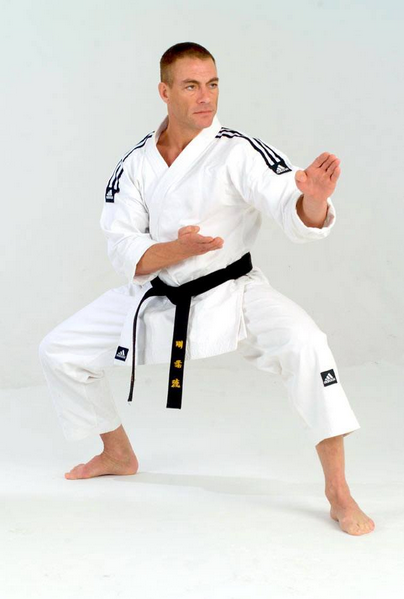
Celebrity Name: Jean-Claude Van Damme
Occupation: Actor, martial artist
Type of Martial Arts: Shotokan karate and Kickboxing
Training Since: 10 years old
Belt Grade: Black belt in various martial arts
The man of splits and high-flying kicks is what Jean-Claude Van Damme is all about. “The Muscles from Brussels” defines how martial artists should look on the screen with all those muscles showing at all angles.
He first landed the main antagonist role in No Retreat, No Surrender after being famous for his heroic roles in Universal Soldier, Bloodsport, Time Cop, and Streetfighter.
In this day and age, JCVD remains fit and flexible and he still does splits and flying kicks on the spot.
Celebrity Name: Michael Jai White
Occupation: Actor, martial artist
Type of Martial Arts: Kyokushin Karate, Taekwondo, Wushu
Training Since: 7 years old
Belt Grade: Black belt in various martial arts
Michael Jai White was the first African American who landed a major comic book superhero role known as Spawn.
He started training in martial arts at the age of seven which made him proficient in 9 different styles by practicing each style and moving on to the next.
Although his style incorporates many martial arts forms, his main focus is on Kyokushin Karate.
White is actively seen in recent martial arts movies and he continues to establish a calm but explosive personality that is hard to deal with when provoked.
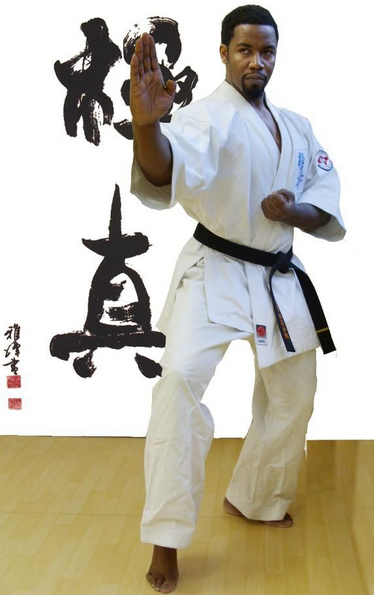
Celebrity Name: John Foo
Occupation: Actor, martial artist
Type of Martial Arts: Wushu
Training Since: 15 years old
Belt Grade: N/A
John Foo is known for his role in Tom-Yum-Goong as the wushu fighter before he landed his major role in 2009 as Jin Kazama in Tekken the movie.
He is a wushu practitioner and uses the art in a stunt role before getting into major roles in the film. John now trains with different styles of martial arts with the hopes of landing more major martial arts roles in the future.
Celebrity Name: Guy Ritchie
Occupation: Film director, producer, screenwriter, businessman
Type of Martial Arts: Judo, Shotokan Karate and Brazilian Jiu-Jitsu
Training Since: 7 years old
Belt Grade: Black belt in Judo and a brown belt in Brazilian Jiu-Jitsu
Guy Ritchie is recognized in gangster films and consistent practitioner of BJJ under Renzo Grazie. He is also proficient in Shotokan Karate as he started practicing martial arts at the age of seven.
This film director currently focuses mainly on BJJ as it benefits his age by doing more on the mats than doing striking techniques. It keeps him fit and more focused as he also actively participate in the film industry.
Celebrity Name: Keanu Reeves
Occupation: Actor
Type of Martial Arts: Brazilian Jiu-jitsu
Training Since: John Wick
Belt Grade: White
Surprisingly, Keanu Reeves claims that he had no martial arts background and his proficiency as he claims was all about movie magic.
He is a great actor who embodies any role and given a role which requires martial arts made him learn in on the set through practice.
He had learned Kung-fu movements in the movie “The Matrix” but the series of John Wick films made him study Brazilian Jiu-jitsu to formally introduce him in the art and that made him a current white belt holder, earning his way to the top.
Celebrity Name: Jason Statham
Occupation: Actor
Type of Martial Arts: Karate, Kickboxing, Wingchun and Brazilian Jiu-jitsu
Training Since: 10 years old
Belt Grade: Purple belt in Brazilian Jiu-jitsu
Jason Statham is known for his tough guy roles and surprises his enemies with his high hitting martial arts movements!
He practiced diving more than of martial arts and he was more of a hobbyist than a practitioner but that didn’t stop him from mastering his craft and landing his role as a fighter and a tough guy in martial arts film.
He didn’t devote his time in martial arts but him being an actor just like Keanu Reeves made him embody what is needed in the film and that made them train to look like they were very proficient in the arts.
If You Train Like an MMA Fighter – You Will Look Like an MMA Fighter.
Yes, this tops the list for most of us. Simply take a glance at Georges St. Pierre, Connor McGregor, or Valentina Shevchenko as the three highest profile examples. The perfect mix of lean muscle and athleticism.
In MMA this type of conditioning is close to the norm, with most amateur fighters getting in nearly as good shape. It’s the type of conditioning that turns heads when you walk by and that you can be proud of when you look at yourself in the mirror. Need to lose weight and pack on lean muscle? MMA style training has you covered!

Click On The Image Above
Why Is MMA Not In The Olympics?
With other forms of martial arts being in the Olympics – Taekwondo, Karate, Judo, and boxing – curious minds often ask why is MMA not in the Olympics?
In this article, I’ll explain why MMA is not in the Olympics, go over the martial arts currently in the Olympics, and give my opinion on whether MMA will ever be in the Olympics. If you’re ready, let’s begin!
Reasons Why Martial Arts Do Work
Why is MMA not in the Olympics?
MMA is a full-contact sport that involves punching, kicking, grappling, and throwing.
It is popular in many countries around the world, and although it has been tried numerous times to be added to the Olympics, it has yet to be accepted.
There are a few reasons for this, but the main reason is that the sport is not considered an “Olympic sport.”
There are a number of issues that need to be addressed before MMA can be accepted as an Olympic sport, including making sure that it is safe and fair for all competitors.
Scoring MMA is Hard
In combat Olympic sports including Taekwondo, Wrestling, Judo, Boxing, and Karate the judges give points based on a strike, throw, or pin.
In MMA the scoring is a bit more difficult because there are too many variables that determine the outcome of a fight.
The scoring can also be based on control time.
The scoring can also be based on control time. the time spent in the dominant position on the ground or in the clinch, which the other combat sports in the Olympics do not incorporate.
which the other combat sports in the Olympics do not incorporate.
Basic Beginner Moves in Kickboxing
Protective gear gets into the way
In Olympic Karate and Taekwondo, the rules state that you can only use semi-contact on your opponent.
In other words, you can’t use full force when striking your opponent, or you will get points deducted or disqualified.
This rule would make MMA boring to implement because it would take away from the entertainment aspect.
People who watch MMA want to see blood. The brutality of the sport is what keeps it thriving. To take away aggressive contact – and add a bunch of gear to the fighters would be to take away its very essence.
How To Master The Von Flue Choke
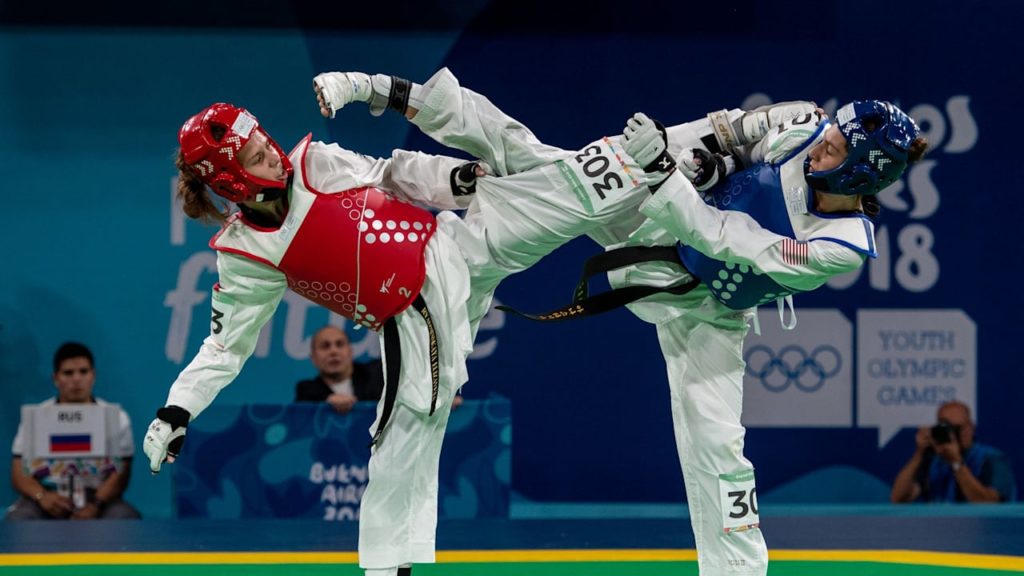
No time to fully recover from fights
In the Olympics, all combat sports are in a tournament style. Meaning if you win a bout you qualify to move on to the next round of the tournament.
The winner of this final match is awarded the gold medal while the loser is awarded the silver. There are two bronze metal matches for those who win in the repechage bracket.
In most cases a fighter will fight once a week until he/she has won the tournament for their weight class. In MMA you are immediately suspended for 14 days after your fight in order to give you recovery time.
Depending on how many MMA fighters are in the tournament, there won’t be enough of a recovery time for the fighters in Olympic style fighting.
Not enough good competition globally
Although MMA is world renowned, there is not enough good fighters around the world to compete in an Olympic setting.
MMA is dominated by Americans and South Americans – specifically Brazil. Although the UFC currently has two African champions, it’s not enough to represent a whole nation of elite fighters.
If we had MMA in the Olympics there would need to be elite MMA fighters representing about 61 countries. To be honest there are not many strong MMA fighters outside of the two continents I’ve mentioned.
.
If you lose, you don’t get paid
In the Olympics if you lose you don’t get paid. There are prizes for Gold, Silver And Bronze but for fourth place and beyond, you get nothing.
It’s not like winning a metal pays you a lot. It pays you less in comparison to sports like the NBA, Football, or Soccer.
A gold metal = $37, 500
A silver metal = $22,500
A bronze metal = $15,00
An MMA fighter will not depart from their training as a professional fighter to be apart of a tournament they’re not getting paid for. The fights to qualify don’t pay you, you only get paid if you win.
Where are if you fight in a professional MMA league you get paid whether you win or lose.
List of Olympic combat sports
There are 6 combat sports in the Olympics – they are boxing, wrestling, karate, taekwondo, judo and fencing. Yes, fencing is known as a combat sport.
Below I have outlined each combat sport and have described their definition and function.
Olympic Wrestling
Wrestling is a sport and also can be used in street self-defense. It is one of the oldest sports in the world and is considered to be one of the most physical.
Wrestling originated in Ancient Egypt. Works of art from 3000 bce depict belt wrestling in Babylonia and Egypt, and the Sumerian Gilgamesh epic has a description of such wrestling.
Wrestling is a full-contact sport that typically involves two opponents grappling – trying to throw each other to the ground.
While on the ground the top opponent tries to pin or submit the bottom opponent.
In the olympics, wrestling has two categories – Freestyle and Greco-Roman wrestling. However, outside of the Olympics there are other styles of wrestling including:
- Folkstyle (collegiate) wrestling
- Catch wrestling
- Shoot wrestling
- Shuai Jiao
- Modern Pankration
- Professional wrestling (WWE)
- Sambo wrestling
- Luta Livre
- Okinawan wrestling
- Sumo wrestling
- Schwingen wrestling
- Mongolian wrestling
- Pankration wrestling
- Lancashire Wrestling
- Greek wrestling
- Devon Wrestling
The difference between Folkstyle wrestling and Freestyle wrestling
Olympic Boxing
Boxing is a sport that is between two people where each tries to land punches on the other person’s head or body.
The object is to knock the opponent out or gain enough points to win the bout. Boxing is one of the oldest sports and is widely watched and favored in America.
In Olympic boxing – boxers wear protective gloves to avoid hand injuries. The rules state that fighters can’t hit the opponent anywhere below the belt or on the back of the head, as it’s prohibited.
In women’s Olympic boxing, protective headgears are mandatory. As for men, headgears were removed in the Olympics from 2016.
Olympic Judo
Judo is a martial art that was developed in Japan in the late nineteenth century. It was first introduced in the Olympics in 1964 in Tokyo.
It is a grappling sport that focuses on throws, joint locks, pins and submissions – and uses the attacker’s weight and size to gain an advantage.
Judo is a very physically demanding sport, and can take years of training to become proficient.
Here are the Judo rules in the Olympics
- No punching or kicking your opponent
- Attacking joints other than elbows is not allowed
- No head dives
- Can not intentionally harm opponent
- techniques like Kawazu Gake and Kami Basami are not allowed
- No wearing of any hard or metallic object
Olympic Karate
Karate is a martial art that originated in Japan. It is an effective self-defense system that focuses on techniques that allow the practitioner to defeat an opponent using hand-to-hand combat.
Karate training can be done in a variety of settings including dojos (training schools), which can provide instruction in karate for both adults and children,
The World Karate Federation scores Olympic karate as follows:
- Ippon: 3 points – Awarded for kicks to the head or any scoring technique delivered on a thrown or fallen opponent.
- Waza-Ari: 2 points – Awarded for kicks to the midsection of the body.
- Yuko: 1 point
Karate fighters in the Olympics will wear protective gear covering their hands and feet.
Olympic Taekwondo
Taekwondo is a physical activity that involves kicking, punching, and various other moves with the intention of damaging or disabling an opponent.
It is a Martial Art that originated in Korea, and was originally developed as a training method for military personnel.
Taekwondo is now enjoyed by people of all ages and backgrounds around the world for its multitude of benefits, including improved balance, flexibility, coordination, and strength.
Taekwondo points in the Olympics is as follows:
- Kick to the trunk protector = 1 point
- Punch to the trunk protector = 2 points
- Turning kick to the trunk protector = 4 points
- Kick to the head = 3 points
- Turning kick to the head = 4 points
- Every penalty against opponent = 1 point
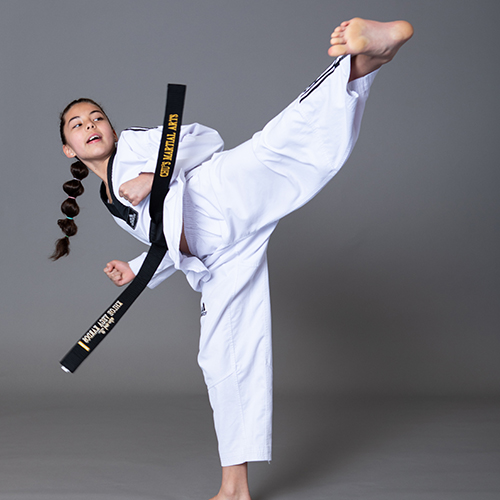
Olympic Fencing
Fencing is a sport that involves the use of steel or bamboo swords to strike an opponent. It is one of the oldest sports in the world, and has been practiced for centuries.
There are three disciplines of fencing – Sabre (saber), Foil, and Epee.
Sabre fencing is more popular, and focuses on using quick, short attacks to take down your opponent. Epee fencing is defensive, so it’s more tactical and involves using both hands to parry and block your opponent’s attacks.
Foil fencing is the final discipline of fencing. The fence is flexible, rectangular in cross section, and weighs under a pound. In all fencing points are only scored by contact with the tip.
Each fencer wears an electrical apparatus that consists of a 12V circuit. The colored lights of this apparatus register valid hits; the white lights register hits landing outside the valid target area.
Each touch in fencing is worth one point. One bout is the duration of 9 minutes divided into three periods of three minutes. And you do get a one minute break in between periods.
.
Fast Girls: A Novel of the 1936 Women’s Olympic Team
One of the most anticipated books of the summer by Popsugar. Frolic, Parade Travel & Leisure, She Knows, and She Reads!
“Fast Girls is a compelling, thrilling look at what it takes to be a female Olympian in pre-war America…Brava to Elise Hooper for bringing these inspiring heroines to the wide audience they so richly deserve.”—Tara Conklin, New York Times bestselling author of The Last Romantics and The House Girl

Click The Image Above
